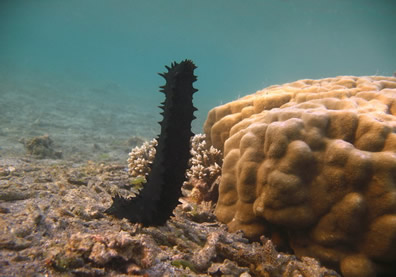Mommy... where do baby sea cucumbers come from?
The species Stichopus chloronotus
is a dioecious species meaning the male and female reproductive parts are
contained in separate individuals; however, the two sexes cannot be
determined by external characteristics. For sexual reproduction within
holothurians there is a single gonad located towards the anterior part of
the coelom. Within the gonad reside either one or two tufts of tubules.
Stichopus chloronotus has two tufts of tubules, one on each side of the
mesentery. The tubules open up into a
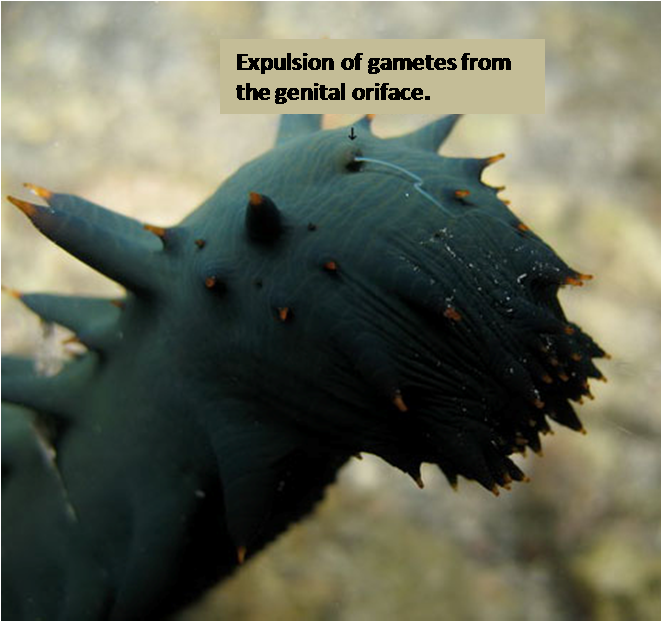 gonoduct
which leads to a gonopore, or genital orifice, located on the top of the
organism slightly behind the tentacles. This pore is wher
gonoduct
which leads to a gonopore, or genital orifice, located on the top of the
organism slightly behind the tentacles. This pore is wher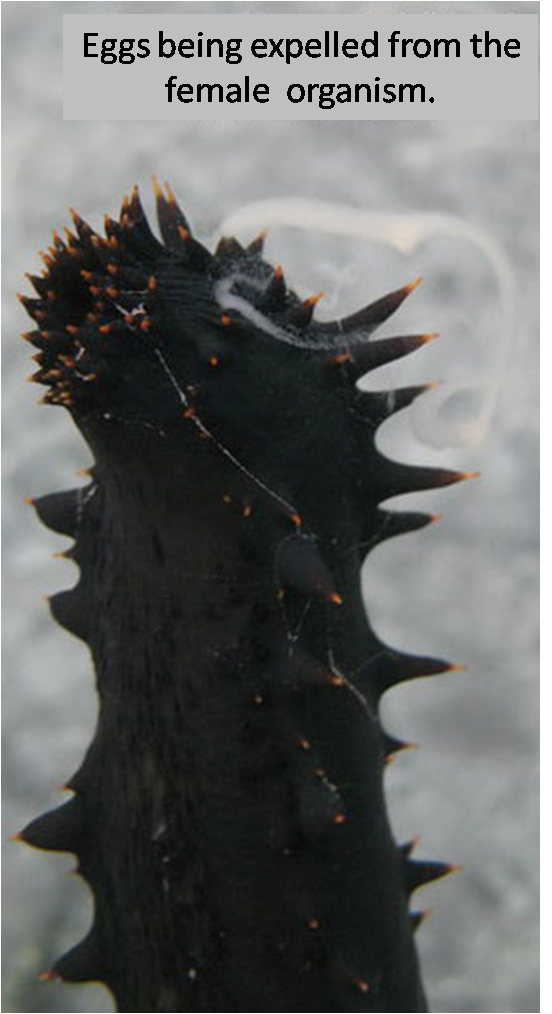 e
the gametes are released during spawning. While spawning, the sea cucumber
lifts its anterior end vertically off the ground while leaving the posterior
end on the ground. When the gametes are released, they are expelled from the
genital orifice in a continuous flow, somewhat resembling a thin white
thread. This spawning process only occurs two times per year, usually
sometime around mid- November and late January, both of which are during the hot
seasons of the Indo-Pacific region. After expulsion of the gametes occurs,
fertilization takes place externally in the water. Following about three
days of development the embryo becomes a free-swimming larva. Eventually the
larva develops into a juvenile with tentacles and podia.
e
the gametes are released during spawning. While spawning, the sea cucumber
lifts its anterior end vertically off the ground while leaving the posterior
end on the ground. When the gametes are released, they are expelled from the
genital orifice in a continuous flow, somewhat resembling a thin white
thread. This spawning process only occurs two times per year, usually
sometime around mid- November and late January, both of which are during the hot
seasons of the Indo-Pacific region. After expulsion of the gametes occurs,
fertilization takes place externally in the water. Following about three
days of development the embryo becomes a free-swimming larva. Eventually the
larva develops into a juvenile with tentacles and podia.
Asexual Reproduction
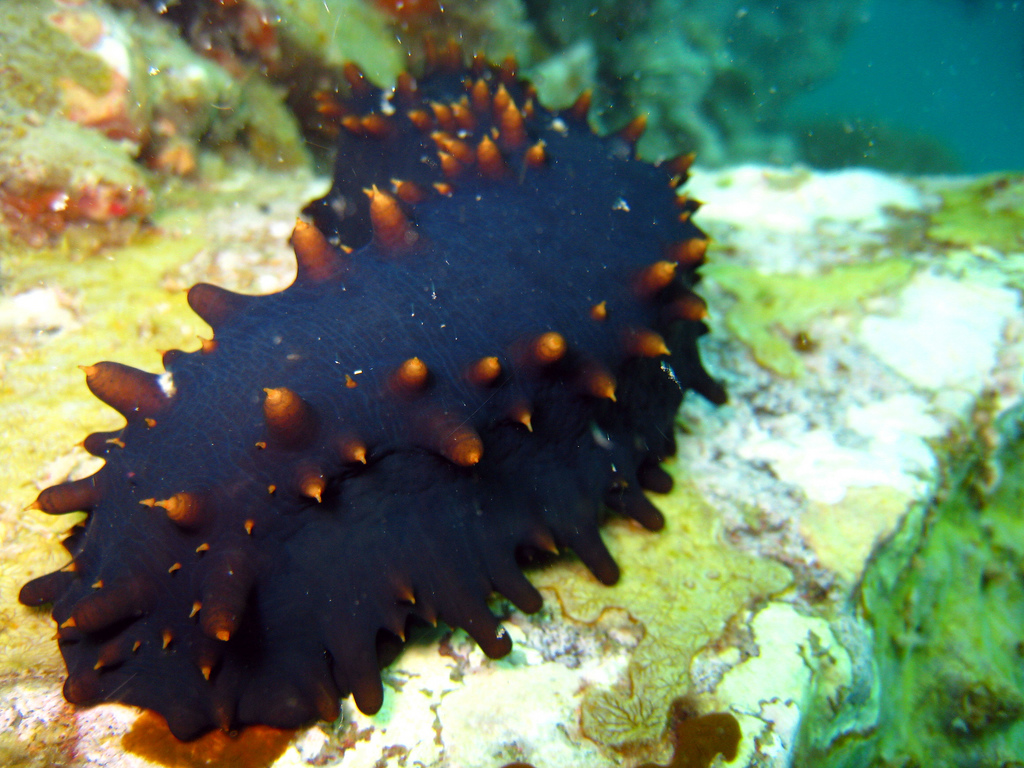 Not only is this species of sea cucumber able to produce sexually, it is
capable, like a few other species in the Aspidochriotida, of performing
asexual reproduction. Besides Stichopus chloronotus, seven other species of
Aspidochirotida are capable of this unusual reproductive strategy. Asexual
reproduction in these species is performed through the process of transverse
fission. In most sea cucumber species capable of asexually reproducing, a
method is used where the organism’s anterior and posterior end rotate in
opposite directions. After a while, the two ends slowly move in different
directions, eventually causing the body wall to tear and split the organism
into two separate individuals. However, Stichopus chloronotus uses a
different method of transverse fission in order to divide itself. More
specifically, the organism starts by creating a constriction in the center
of its body. While the posterior region of its body stays stati
Not only is this species of sea cucumber able to produce sexually, it is
capable, like a few other species in the Aspidochriotida, of performing
asexual reproduction. Besides Stichopus chloronotus, seven other species of
Aspidochirotida are capable of this unusual reproductive strategy. Asexual
reproduction in these species is performed through the process of transverse
fission. In most sea cucumber species capable of asexually reproducing, a
method is used where the organism’s anterior and posterior end rotate in
opposite directions. After a while, the two ends slowly move in different
directions, eventually causing the body wall to tear and split the organism
into two separate individuals. However, Stichopus chloronotus uses a
different method of transverse fission in order to divide itself. More
specifically, the organism starts by creating a constriction in the center
of its body. While the posterior region of its body stays stati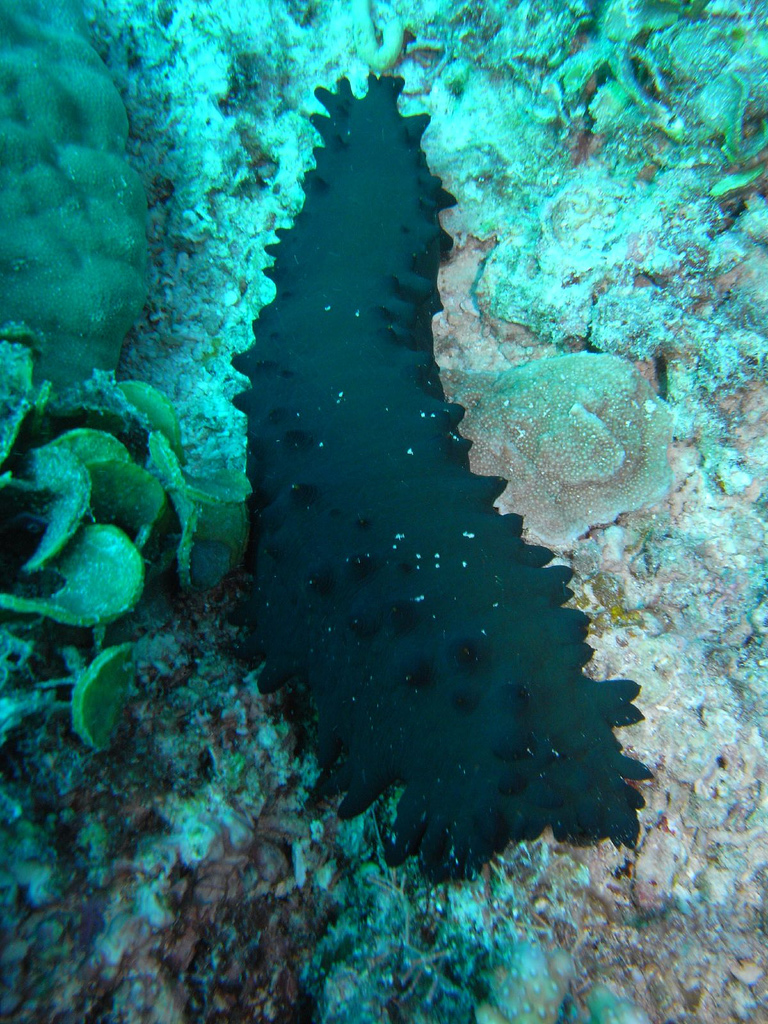 onary the
anterior end begins to move forward. This results in a more intense
constriction in the center of the body. As the anterior end moves further
away from the posterior, the constriction in the center, or fission site,
begins to turn in to almost nothing but a fluid like substance. Following
this, the two halves separate with ease. Based on a study, this entire
process only takes a few minutes. Following the fission, it takes around a
day for the tissue at the fission site to heal. The body wall of Stichopus
chloronotus is often referred to as “catch connective tissue” and it is very
thin and fluid-like. It is believed that this tissue is the reason why it is
possible for Stichopus chloronotus to undergo transverse fission with more
ease than other species capable of the phenomenon. Furthermore, it is
thought that this tissue also helps with the speedy recovery that Stichopus
chloronotus is capable of after fission has occurred. Transverse fission
usually occurs during cool portions of the year (around June in the
Indo-Pacific region) and it is also thought that it mainly takes place a
night.
onary the
anterior end begins to move forward. This results in a more intense
constriction in the center of the body. As the anterior end moves further
away from the posterior, the constriction in the center, or fission site,
begins to turn in to almost nothing but a fluid like substance. Following
this, the two halves separate with ease. Based on a study, this entire
process only takes a few minutes. Following the fission, it takes around a
day for the tissue at the fission site to heal. The body wall of Stichopus
chloronotus is often referred to as “catch connective tissue” and it is very
thin and fluid-like. It is believed that this tissue is the reason why it is
possible for Stichopus chloronotus to undergo transverse fission with more
ease than other species capable of the phenomenon. Furthermore, it is
thought that this tissue also helps with the speedy recovery that Stichopus
chloronotus is capable of after fission has occurred. Transverse fission
usually occurs during cool portions of the year (around June in the
Indo-Pacific region) and it is also thought that it mainly takes place a
night.
Now learn more about interactions Stichopus chloronotus has with other species!
